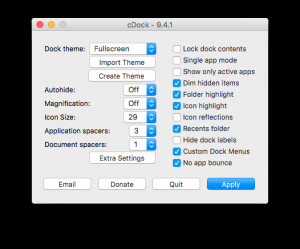

#CDOCK FOREVER TRIAL TRIAL#
So we needed to have a trial that would detect a modest benefit. Severe viral respiratory infections are generally pretty difficult to treat. And we realized that we were going to need a large number of patients, because there was not going to be a miracle drug. As we didn't have much time, we also needed to get this thing started very quickly. If people don’t have time, they are not going to enrol patients into very complicated trials. Only a simple trial would work in those very stressed circumstances. There was a very real chance that the NHS would be completely overwhelmed. The context was very clear: we were going to have a really big outbreak. That gave us the ability to simplify things.

We knew that we could keep the follow-up very simple, and ascertain outcomes like death, particularly, but also intensive care admission and ventilation from existing data streams. In the UK, we have the advantage of data linkage. Martin got those protocols out of a drawer, and we decided that we should do something very simple like those. Martin picked up the protocols for the ISIS (International studies of Infarct Survival) trials, mega-trials from the 1980s looking at the effect of various drugs on survival following heart attacks. We had been in discussion with the World Health Organization about working with them on their Solidarity platform trial, but Martin and I looked at the protocol and decided it was too complicated. How did the protocol change with this union?

This brought together two traditions within Oxford - emerging infections, which I've been working on for a long time, and large-scale pragmatic cardiovascular trials.

He'd had a discussion with The Wellcome Trust’s Director Jeremy Farrar, and Jeremy knew I'd been funded to do this research. And that was the point that Martin Landray, the other co-chief investigator of RECOVERY, and I got in contact. We had a sort of design and a pot of money. The funders rang me up and said “Yes, we'll fund you. I had applied for additional funding to continue those trials, to turn these into a platform trial in China with Chinese colleagues. We didn't reach the target sample size for either of those studies. Not long afterwards, we started a second trial with remdesivir in Wuhan.īut epidemics are a bit unpredictable, and very aggressive public health control measures in China actually meant that case numbers plummeted in Wuhan. Within 20 days of the first announcement of the outbreak, we managed to enrol the first patient into a trial of lopinavir and ritonavir. We used some pre-prepared protocols that we had developed for the MERS coronavirus with colleagues in Saudi Arabia, and adapted those quickly. When this outbreak started, I was working with a Chinese colleague and his team to set up trials in Wuhan itself right away. But, still, these were started towards the end of the epidemic, and in that West Africa outbreak we really didn't get any good answers. The next big challenge was the Ebola outbreak, where we managed to get trials started within a few months. If you go back to the 2009 influenza pandemic, it was clear that there was a big failure to do any good, meaningful RCTs. I've been working on epidemic infections for quite some time, and we've been trying to improve the speed with which we can start clinical studies for some years. Peter Horby, co-lead of the trial and Professor of Emerging Infectious Diseases and Global Health at the University of Oxford, discussed the origins of the trial, the lessons learned and the future prospects for large, simple platform trials, with Asher Mullard.Ĭredit: David Fisher, Fisher Studios, Oxford. Ongoing arms are testing other agents, including an antibody cocktail and the JAK inhibitor baricitinib. Its results have demonstrated the benefits of the steroid dexamethasone and the IL-6-targeting antibody tocilizumab, while showing the lack of efficacy for azithromycin, colchicine, convalescent plasma, hydroxychloroquine and lopinavir–ritonavir. In a landscape marked by poorly designed and underpowered trials, RECOVERY stands out as a rare bright spot. It has now enrolled nearly 40,000 patients - just under 10% of the UK’s hospitalized COVID-19 patient population - into 13 treatment arms. Initially set up to test four possible treatment options in a few thousand hospitalized COVID-19 patients, the platform trial is still going strong. On 23 March, the UK National Health Service’s RECOVERY trial marked its first anniversary.


 0 kommentar(er)
0 kommentar(er)
